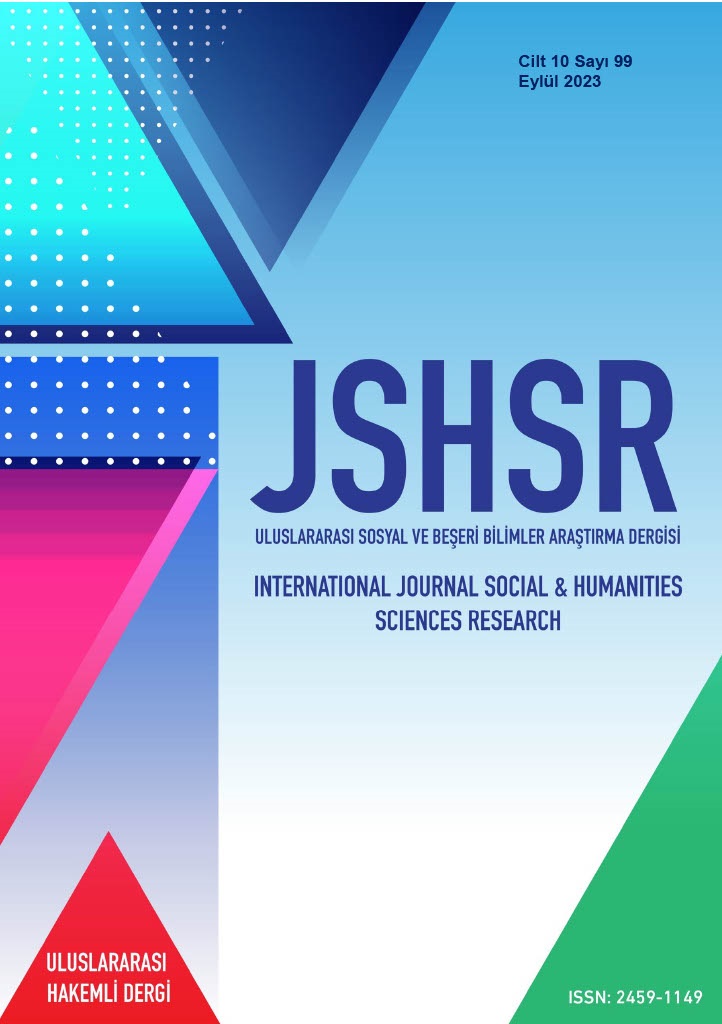Investigation of Drilling and Blasting Operations in Underground Mining by Fine-Kinney Risk Assessment Method
DOI:
https://doi.org/10.5281/zenodo.8396569Keywords:
Drilling blasting, Fine Kinney, Risk assessment, MiningAbstract
The mining industry is a sector where work accidents and occupational diseases are experienced due to basic reasons such as harsh natural conditions, faulty production methods, non-compliance with minimum occupational health and safety requirements, lack of organization and infrastructure, poor equipment selection, insufficient use of technology, and insufficient and qualified personnel. In this challenging sector where every process carries serious risks, employers, permanent supervisors, responsible engineers, occupational safety experts, workers and other members of the sector have great responsibilities in ensuring occupational safety. In order to create a safe production environment in terms of occupational health and safety, it is important to determine possible hazards by making a risk assessment in advance, and to provide collective protection by taking protective and preventive measures. More than half of the occupational accidents that occur in underground mines occur during the drilling and blasting operations, which is the first step of the production process. These accidents can only be prevented or minimized by taking the necessary precautions. In this study, the precautions to be taken before, after and during the drilling and blasting operations were examined by using the Fine-Kinney risk assessment method. 101 different hazard, damage, risk score, planned measure and post-precaution risk score explanations related to the transactions listed in a total of 20 different work steps are given one by one. Thus, an example is presented that allows underground mining enterprises to determine their own risk scores and levels in the risk assessment process and to create their own roadmap to help predict potential risks that may arise in the future.
References
Adem, A. (2022). İş sağlığı ve güvenliğinde kullanılan risk analizi tekniklerinin değerlendirilmesi için bir rehber önerisi. Politeknik Dergisi, 25(3), 1319-1328. https://doi.org/10.2339/politeknik.1114897.
Akpınar, T. (2015). İş sağlığı ve iş güvenliği işçi işveren rehberi. İstanbul On İki Levha Yayıncılık.
Akpınar, T., & Çakmakkaya, B. Y. (2014). İş sağlığı ve güvenliği açısından işverenlerin risk değerlendirme yükümlülüğü. Çalışma ve Toplum Dergisi, 2014(1), 273-304.
Aslan, B., & Şimşek, S. (2021). Risk analysis and assessment in the forestry sector. TAS Journal, 1(3), 1-16.
Başar, O., & Ceylan, H. (2020). Tavas Bahçeköy olivin üretim tesisinde iş güvenliği risk analizi. Teknik Bilimler Dergisi, 10(1), 9-15. https://doi.org/10.35354/tbed.638207.
Birgören, B. (2017). Calculation Challenges and solution suggestions for risk factors in the risk analysis method in the Fine Kinney risk analysis method. International Journal of Engineering Research and Development, 9(1), 19-25. https://doi.org/10.29137/umagd.346168.
Cervatoğlu, E. (2003). İş sağlığı ve güvenliği konusunda bir değerlendirme. Türk Tabipler Birliği Mesleki Sağlık ve Güvenlik Dergisi, 13, 23-29.
Ceylan, H., & Başhelvacı, V. S. (2011). Risk değerlendirme tablosu yöntemi ile risk analizi: Bir uygulama. International Journal of Engineering Research and Development, 3(2), 25-33.
Çağlar, G., & Demirbilek, M. (2022). Krom cevher üretimi ve hazırlık galerisi yapım işleri risk değerlendirmesi. OHS ACADEMY, 5(2), 66-75. https://doi.org/10.38213/ohsacademy.1128841.
Çevik, R. (2023). Maden işletmelerinde iş sağlığı ve güvenliği önlemlerinin alınmadığına dair tespit davasının hukuki yararı-karar incelemesi. Ankara Sosyal Bilimler Üniversitesi Hukuk Fakültesi Dergisi, 5(2023), 487-540. https://doi.org/10.47136/asbuhfd.1282105.
Dizlek, O. A., & Yıldız, Z. (2022). Kömür madenlerinde alınan iş güvenliği önlemlerinin değerlendirmesi. Karaelmas Journal of Occupational Health and Safety, 6(2), 77-86. https://doi.org/10.33720/kisgd.1080939.
Erdebilli, B., & Gür, L. (2020). Bulanık Fine-Kinney yöntemiyle risk değerlendirmesi uygulaması. Endüstri Mühendisliği, 31(1), 75-86.
Fine, W.T. (1971). Mathematical evaluations for controlling hazards (No. NOLTR-71-31). Naval Ordnance Lab., White Oak. Md.
Gül, M., Güven, B., & Güneri, A. F. (2018). A new Fine-Kinney-based risk assessment framework using FAHP-FVIKOR Incorporation. Journal of Loss Prevention in the Process Industries, 53, 3-16. https://doi.org/10.1016/j.jlp.2017.08.014.
İş Sağlığı ve Güvenliği Risk Değerlendirmesi Yönetmeliği, (2012). T.C. Remi Gazete 28512. https://www.mevzuat.gov.tr/mevzuat?MevzuatNo=16925&MevzuatTur=7&MevzuatTertip=5
Kahya, E., Ulutaş, B., & Özkan, N. F. (2019). Metal endüstrisinde kişisel koruyucu donanım kullanımının analizi. Selçuk Üniversitesi Mühendislik. Bilim ve Teknoloji Dergisi, 7(2), 420-433. https://doi.org/10.15317/Scitech.2019.209.
Karaahmetoğlu, A. (2019). 6331 sayılı İş Sağlığı ve Güvenliği Kanunu bağlamında Soma madenlerinin iş sağlığı ve güvenliği açısından değerlendirilmesi. Sosyal Siyaset Konferansları Dergisi, 76, 89-128.
Kinney, G. F., & Wiruth, A. D. (1976). Practical risk analysis for safety management (Vol. 5865). China Lake, CA: Naval Weapons Center.
Koçali, K. (2018). Şırnak kömür madeni kazası ışığında kömür madenciliğindeki uygunsuzluklar hakkında öneriler. Türkiye 21. Uluslararası Kömür Kongresi “ICCET 2018”, 387-399, Zonguldak, Türkiye.
Koçali, K. (2021). Maden kazalarında sorumluluklar ve kusur oranları. Nobel Yayın Kitapevi..
Koçali, K. (2022). Madencilik sektörü iş kazalarının kayıp iş günü ve cinsiyet risk faktörleri açısından sürveyans analizi. Scientific Mining Journal, 61(4), 221–229. https://doi.org/10.30797/ madencilik.1081296.
Maden İşyerlerinde İş Sağlığı ve Güvenliği Yönetmeliği, (2013). T.C. Resmi Gazete 28770. https://www.mevzuat.gov.tr/File/GeneratePdf?mevzuatNo=18858&mevzuatTur=KurumVeKurulusYonetmeligi&mevzuatTertip=5
Mutlu, M. (2021). Aksaray İlindeki bir taş ocağında iş sağlığı ve güvenliği kapsamında Fine-Kinney metodolojisi ile risk değerlendirmesi. Uluslararası Bilimsel Çalışmalar Kongresi, 667-677, Ankara, Türkiye.
OSHA (Occupational Safety and Health Administration). (2004). Personal Protective Equipment. U.S. Department of Labor.
Oturakçı, M., Dağsuyu, C., & Kokangül, A. (2015). A new approach to Fine Kinney method and an implementation study. Alphanumeric Journal, 3(2), 83-92. https://doi.org/10.17093/aj.2015.3. 2.5000139953.
Önder, S., Suner, N., & Önder, M. (2011). Madencilik sektöründe meydana gelen iş kazalarının risk değerlendirme karar matrisi ile incelenmesi. Türkiye 22. Uluslararası Madencilik Kongresi ve Sergisi, 399-406, Ankara, Türkiye.
Tabak, P., & Büyükakıncı, B. Y. (2023). Risk analysis of restoration works by Fine Kinney method: An evaluation over masonry civil architecture examples in Fatih District, Istanbul. International Journal of Conservation Science, 14(1), 19-32. https://doi.org/10.36868/IJCS.2023.01.02.
Yıldız, T. D. (2021). Loss of profits occurring due to the halting of mining operations arising from occupational accidents or reasons related to legislation. Gospodarka Surowcami Mineralnymi: Mineral Resources Management, 37(4), 153-176. https://doi.org/10.24425/gsm.2021.139739.
Yılmaz, F. (2010). Risk Değerlendirmesi’nde yöntem tartışması. Toprak İşveren Sendikası Dergisi, 86, 16-19.
Downloads
Published
How to Cite
Issue
Section
License
Copyright (c) 2023 INTERNATIONAL JOURNAL OF SOCIAL HUMANITIES SCIENCES RESEARCH

This work is licensed under a Creative Commons Attribution 4.0 International License.


